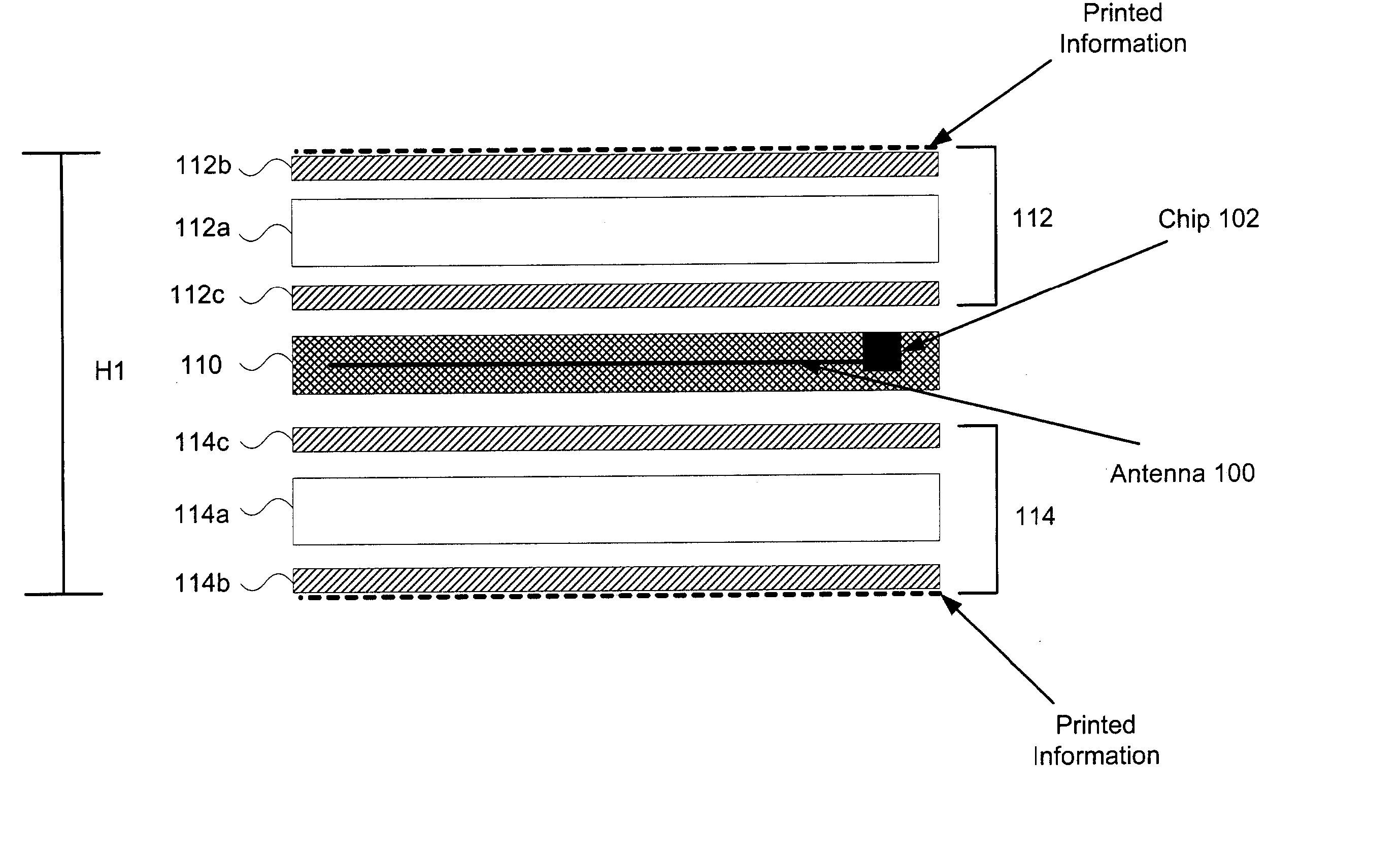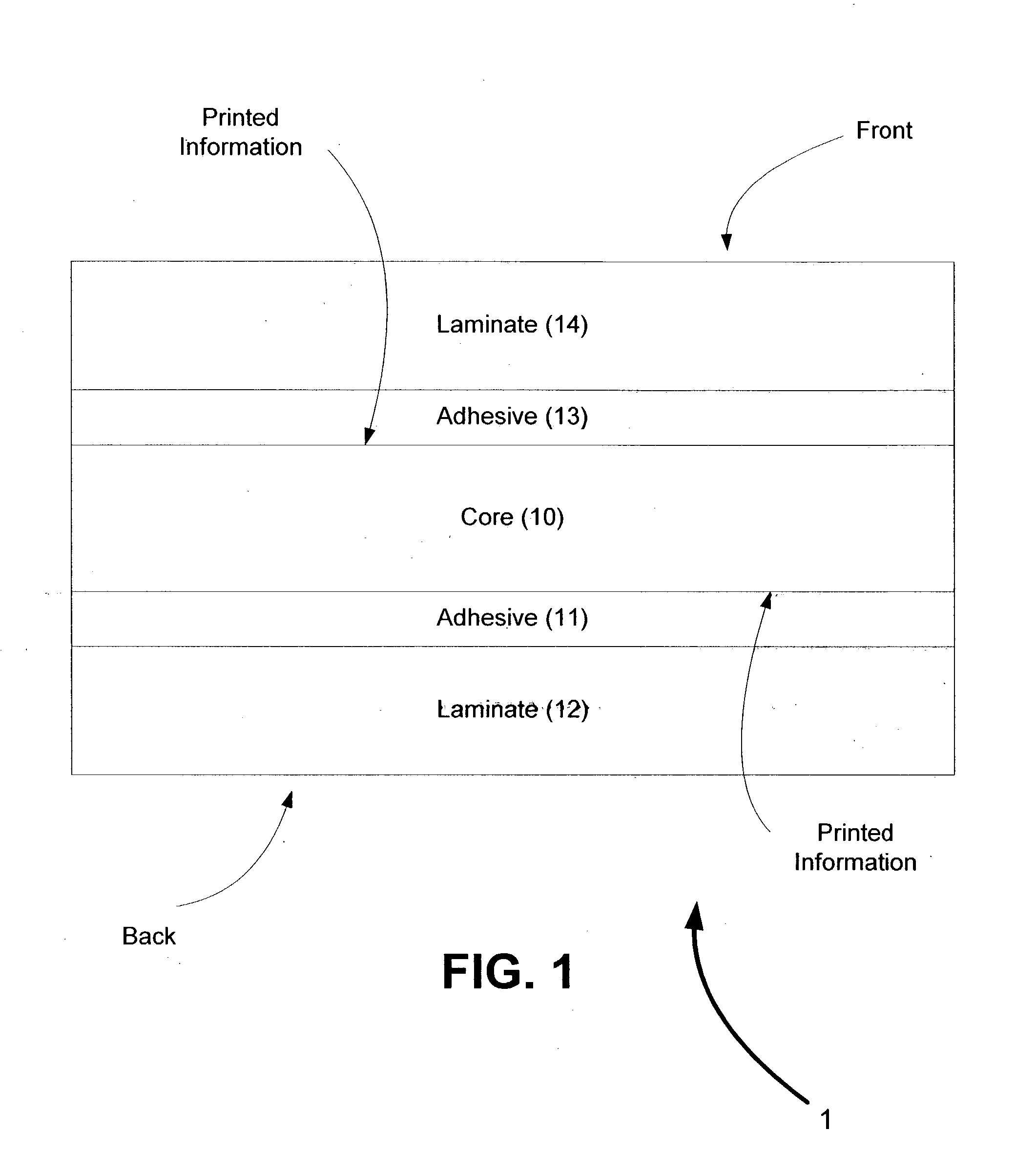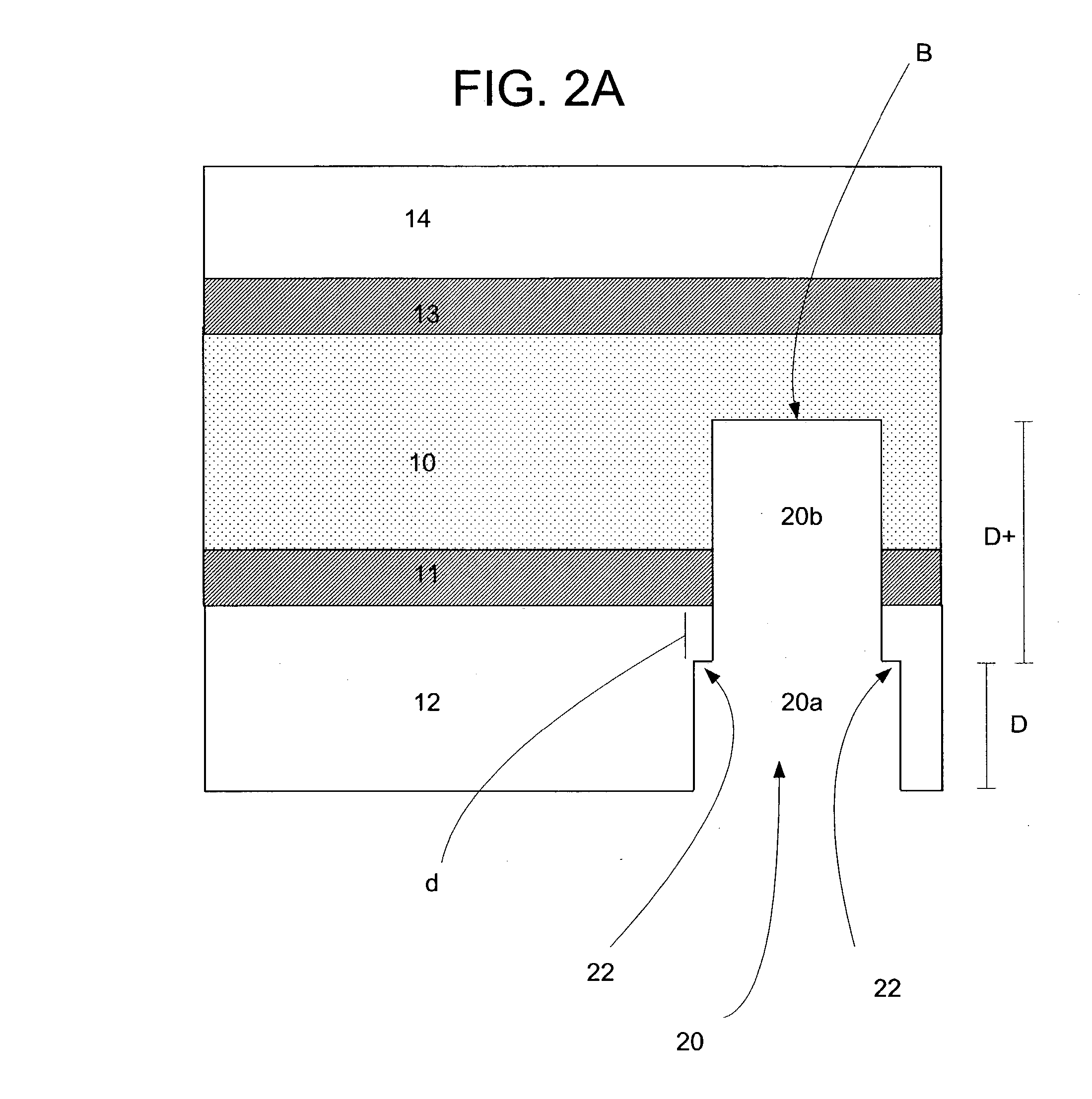Contact smart cards having a document core, contactless smart cards including multi-layered structure, pet-based identification document, and methods of making same
a contact smart card and document core technology, applied in the field of contact smart cards, can solve the problems of not having an exhaustive list of possible smart card functionality, reducing the chances of loss, misappropriation or theft, and increasing the difficulty of verifying one's true identity, so as to reduce the chance of loss, misappropriation or theft, and the effect of ensuring the validity
- Summary
- Abstract
- Description
- Claims
- Application Information
AI Technical Summary
Benefits of technology
Problems solved by technology
Method used
Image
Examples
Embodiment Construction
is divided into three sections for the reader's convenience (e.g., "Contact Smart Cards Including a Document Core," "Contactless Smart Cards Including Multi-layered Structure," and "Manufacture of PET-Based Identification Document"). It should be appreciated, however, that elements and functionality disclosed in one section can be readily combined with elements and functionality found in another section. Therefore, the section headings should not be interpreted as limiting the scope of the present invention.
[0047] Section 1: Contact Smart Cards Including a Document Core
[0048] For purposes of illustration, the following section will generally proceed with reference to contact-type smart cards (which are sometimes interchangeably referred to as a "contact smart ID document" or a "smart ID document"). A preferred contact-type smart ID document includes a multi-layered ID document including a document core and fused or secured polymer laminates. The multi-layered ID document is provided...
PUM
| Property | Measurement | Unit |
|---|---|---|
| angle | aaaaa | aaaaa |
| thickness | aaaaa | aaaaa |
| thickness | aaaaa | aaaaa |
Abstract
Description
Claims
Application Information
 Login to View More
Login to View More - R&D
- Intellectual Property
- Life Sciences
- Materials
- Tech Scout
- Unparalleled Data Quality
- Higher Quality Content
- 60% Fewer Hallucinations
Browse by: Latest US Patents, China's latest patents, Technical Efficacy Thesaurus, Application Domain, Technology Topic, Popular Technical Reports.
© 2025 PatSnap. All rights reserved.Legal|Privacy policy|Modern Slavery Act Transparency Statement|Sitemap|About US| Contact US: help@patsnap.com



